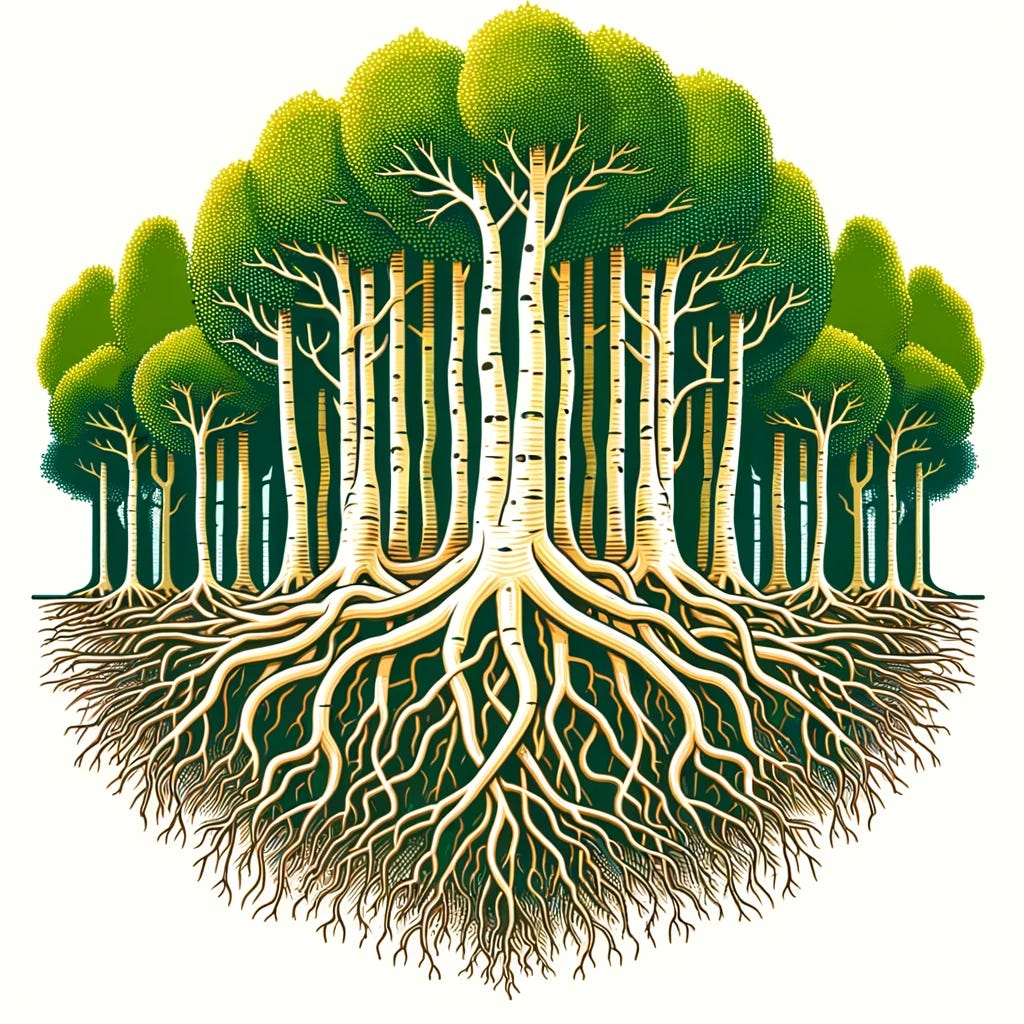The Pando Tree: Unraveling the Mysteries of Earth's Largest Living Organism
When we think of giants in the natural world, images of towering sequoias and expansive coral reefs typically come to mind. However, nestled within the heart of Utah lies a different kind of colossus, one that challenges our understanding of life, individuality, and longevity.
Meet the Pando aspen grove, affectionately dubbed the "trembling giant" — not just a collection of trees but a single living entity, considered by many to be the largest organism on Earth.
The Marvel of Pando:
Pando, from the Latin "I spread," is a fitting name for this extensive clonal colony.
With approximately 47,000 quaking aspen stems shooting from a colossal root system, Pando spans over 106 acres and weighs an estimated 6,600 tons.
This single organism has not only spread across the land but through time, with an age that is nothing short of staggering.
A Timeless Giant:
The trembling giant boasts a lifetime that stretches at least 9,000 years, making Pando one of the planet's most ancient living organisms.
Each stem may live for around 100 years, but the root system is what gives this titan its enduring presence. It's an exemplary display of resilience and survival, continuously regenerating new stems to replace the old, an endless cycle of birth from a single, enduring source.
Exploring Pando's World Through Sound:
While scientists study the secrets of Pando's longevity and its ecological importance, Jeff Rice and Lance Oditt have embarked on a mission to capture its essence through sound. Friends of Pando
At the 184th Meeting of the Acoustical Society of America, they presented their project to create an acoustic portrait of Pando.
Rice, an audio engineer with a passion for wildlife recording, and Oditt, the executive director of Friends of Pando, combined their expertise to document the aural landscape of this unique forest.
Pando's Soundscape:
In 2022, Rice collected the ambient noises of Pando — the rustling of leaves, calls of birds, and even the soft whispers of weather — using specialized microphones.
These natural symphonies are not only pleasing to the ear but also serve as indicators of environmental health, offering clues to the local biodiversity and potential changes within the ecosystem. Ambient noises
The Vibrations of Life:
Perhaps the most intriguing aspect of their exploration was the use of hydrophones to capture vibrations from Pando's extensive root system.
The idea was to detect the movement of wind through the trees and see if those vibrations could travel through the roots.
The experiment had surprising results, with faint sounds picked up by the hydrophones, suggesting a network of communication far more complex than we might have imagined. Sound of roots
Beneath the Surface:
Their findings, while preliminary, suggest a world of interaction beneath our feet, akin to an organic internet connecting thousands of aspen stems.
The thunderstorm recordings, in particular, showed a correlation between the intensity of the storm and the sounds captured by the hydrophones, painting a picture of a living network responding to the elements.
Conclusion:
Pando stands as a monument to nature's wonders, a single organism that reminds us of the interconnectedness of life. The work by Rice and Oditt not only contributes to our artistic appreciation of Pando but also opens new avenues for scientific research.
From studies on water movement to understanding the colony's structure and health, the trembling giant continues to teach us, inspire us, and remind us of the enduring power of life on Earth.




